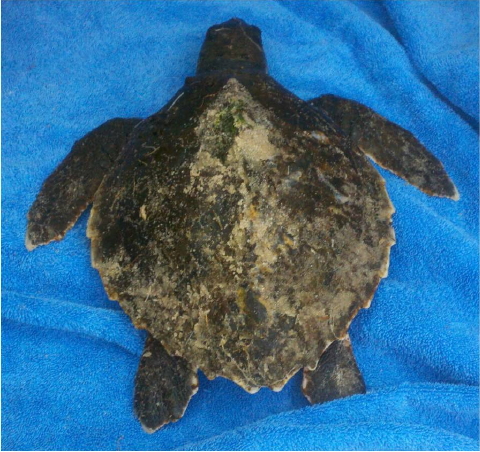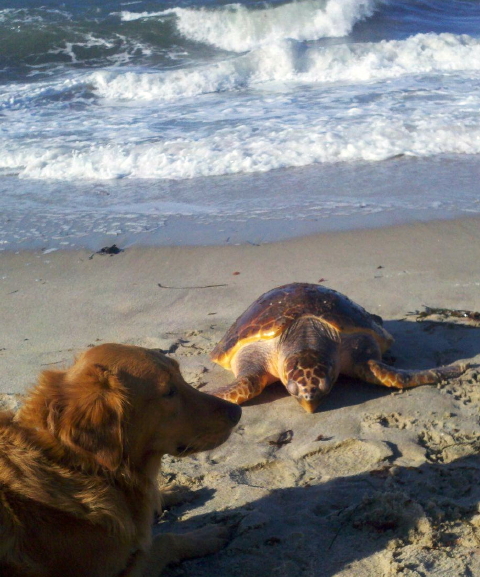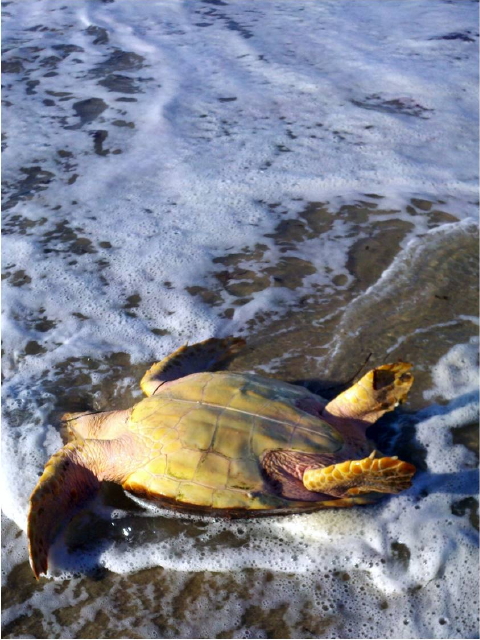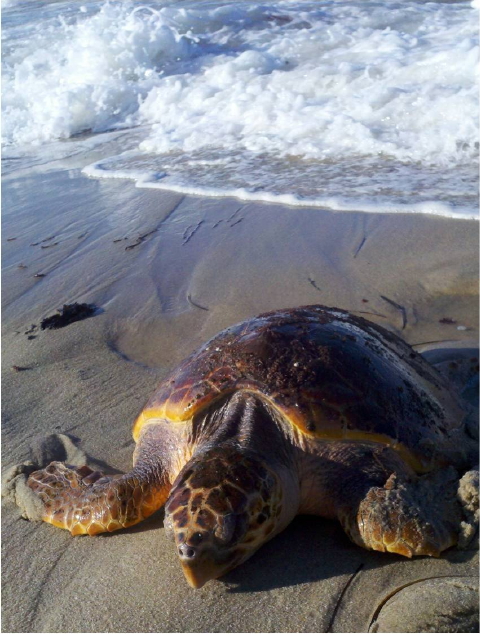Cold-Stunned Juvenile Loggerhead-Green Hybrid
Wind and surf continue to pound Cape Cod Bay beaches, depositing cold-stunned sea turtles with each high tide in numbers beginning to presage a record stranding season. Turtle Journal’s Sue Wieber Nourse and Rufus chugged out to Brewster this morning and searched the shoreline east of Saints Landing.
Rufus Finds Juvenile Loggerhead-Green Hybrid
As they approached Breakwater, Rufus spotted a helpless sea turtle trapped in the forthy surf. Sue and Rufus plunged into the waves and lugged this young hybrid to safety … with Sue providing the muscle and Rufus barking encouragement.
Stranded Loggerhead-Green Hybrid in Brewster
Out of danger from the surf, the juvenile sea turtle responded to Sue’s touch with positive signs of life. Clearly, an unusual specimen, Sue examined it carefully to determine its species. The massive neck musculature indicated loggerhead, but shell patterns and shape seemed to point to a green sea turtle. Later, at the Wellfleet Bay Wildlife Sanctuary, Director Bob Prescott and Sue settled on a preliminary identification of this sea turtle as a hybrid loggerhead-green. Bob took a tissue sample for DNA analysis.
Small Juvenile Loggerhead-Green Sea Turtle
For rudimentary field measurement, Sue put her sneaker near the turtle’s carapace to get an approximate size; in this case, maybe around 14 inches straight-line length. Yet, with its massive muscles, it weighed more than 15 pounds and took a yeoman’s effort for Sue to lug it nearly a mile from the beach to the Turtle Journal car. The juvenile hybrid will be transported to the New England Aquarium for treatment.










